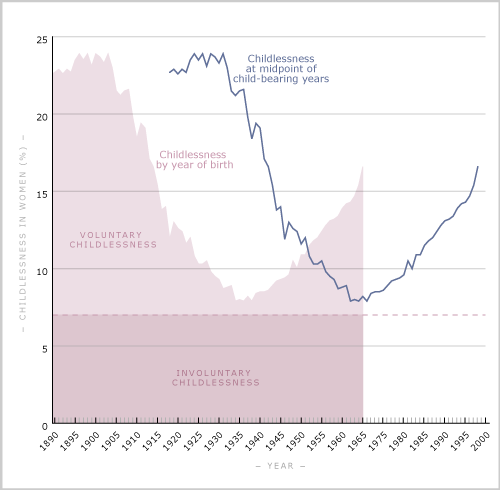
This graph shows how childlessness amongst women has changed over time in New Zealand. Assuming a constant rate of involuntary infertility of about 7%, it demonstrates that women of child-bearing age around the First World War and the economic depression of the 1930s had relatively high rates of voluntary childlessness. This changed dramatically after the Second World War – more women married at younger (and thus more fertile) ages and had limited control over their fertility, because contraceptives were not yet common. This resulted in a baby boom which lasted into the 1970s, during which there was very little voluntary childlessness among women. By contrast, voluntary childlessness among women of childbearing age in the 1980s and 1990s was a lot higher. Significant factors in women choosing not to have children were that contraception was readily available, and more women were in the paid workforce.
Using this item
Te Ara - The Encyclopedia of New Zealand

This item is licensed under a Creative Commons Attribution-NonCommercial 3.0 New Zealand Licence
Source: Statistics New Zealand







Add new comment